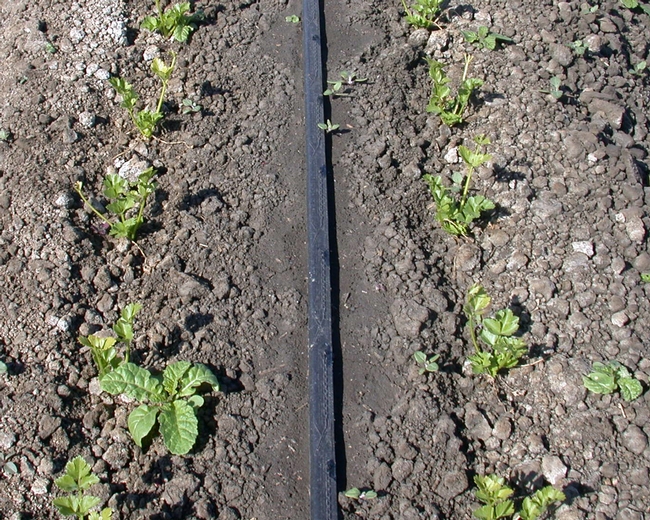Water prices are increasing and so are the regulatory pressures on agricultural runoff and sediment losses. How much more efficient can vegetable growers get with their irrigation practices? Drip irrigation as the most efficient method of field irrigation is not new to vegetable growers but the sprinklers are typically used for the first 4-6 weeks for the transplant establishment and either application of herbicides with overhead water or activation of herbicides previously applied by ground methods.
However, there are several vegetable operations that rely solely on drip as an irrigation method from start to finish, even for such water-thirsty vegetables as celery and cabbage. This works well in cooler winter months as a single high flow drip line irrigates two rows of plants. But does drip-only irrigation compromise efficacy of herbicides and crop safety?
We evaluated GoalTender(oxyfluorfen) and Chateau (flumioxazin) applied one day before transplanting cabbage and celery in drip-only irrigated fields. Both of these herbicides have been very effective when sprinkler-activated and controlled broad spectrum of broadleaf weeds typical in our vegetable fields (however, Chateau is not currently registered in celery or cabbage).
In cabbage we applied herbicides to drip pre-irrigated beds.
In celery we sprayed herbicides in two drip-only planting systems used by growers:
1) Transplants are planted into dry beds, drip installed immediately after planting and irrigation started (Dry beds)
2) Drip pre-irrigated beds transplanted into celery 3-5 days later (Pre-irrigated beds)
This is what we found out in cabbage:
- Predominant weeds were: annual sowthistle, little mallow and goosefoot at low densities in untreated checks (0.5 weeds/ft²)
- Both herbicides provided 92% control
- No significant crop injury
- Same number of marketable heads as in untreated checks
This is what we found out in celery:
- Predominant weeds were: goosefoot, burning nettle and mustards at high densities in untreated checks (5-6 weeds/ft²)
- Both herbicides provided 87% control in ‘dry beds’ and 85% in ‘pre-irrigated beds’
- No significant injury to celery in either ‘dry’ or ‘pre-irrigated’ systems
- Same number of marketable heads as in untreated checks.
These results are very similar to those from our previous studies with sprinkler activated Chateau and GoalTender in celery and cole crops (84-92% weed control) suggesting that conversion to drip-only irrigation will not compromise herbicide efficacy or crop safety.
Goaltender and Chateau (Top and Center) were effective in drip-only irrigated bed when applied 1 day before planting, compared to untreated weedy check (Bottom)
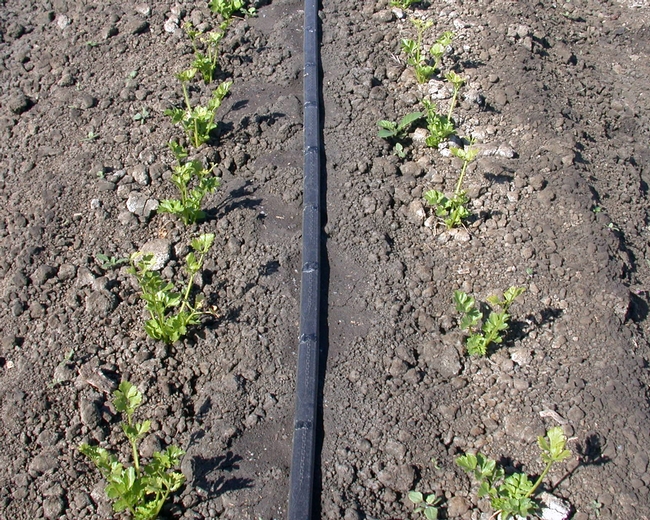
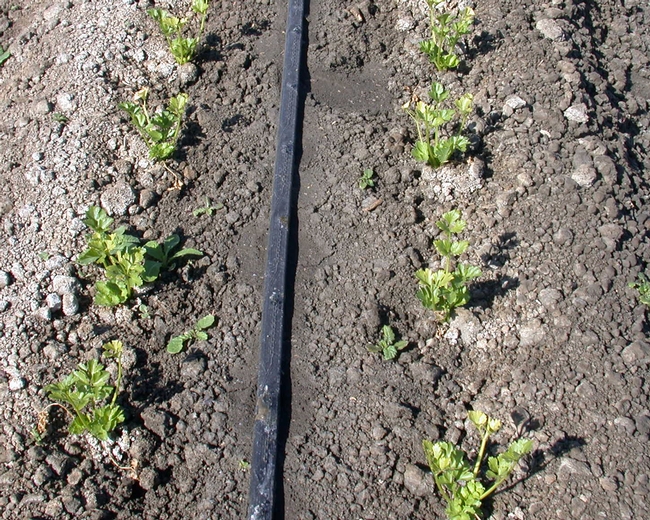
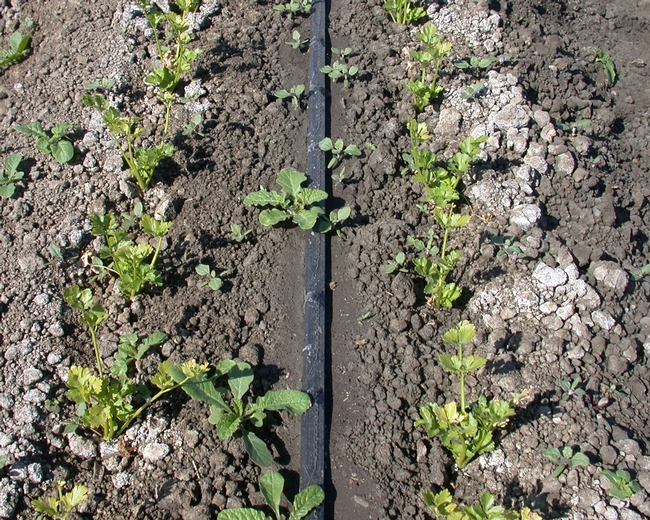
Celery transplanting into dry beds. Drip lines will be installed immediately after planting and used as a sole source of irrigation
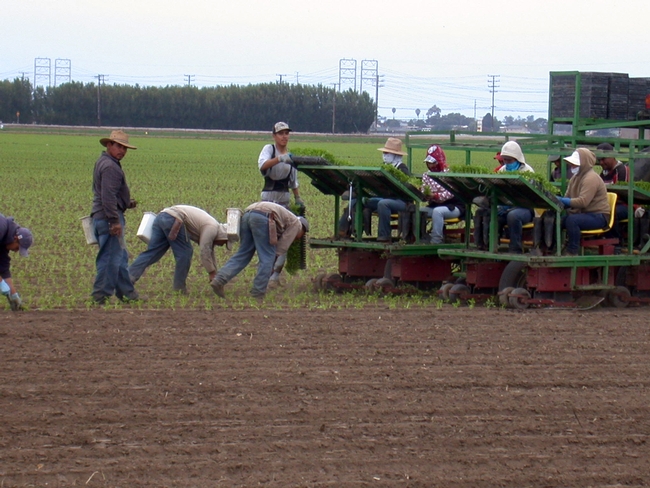
Attached Images:
